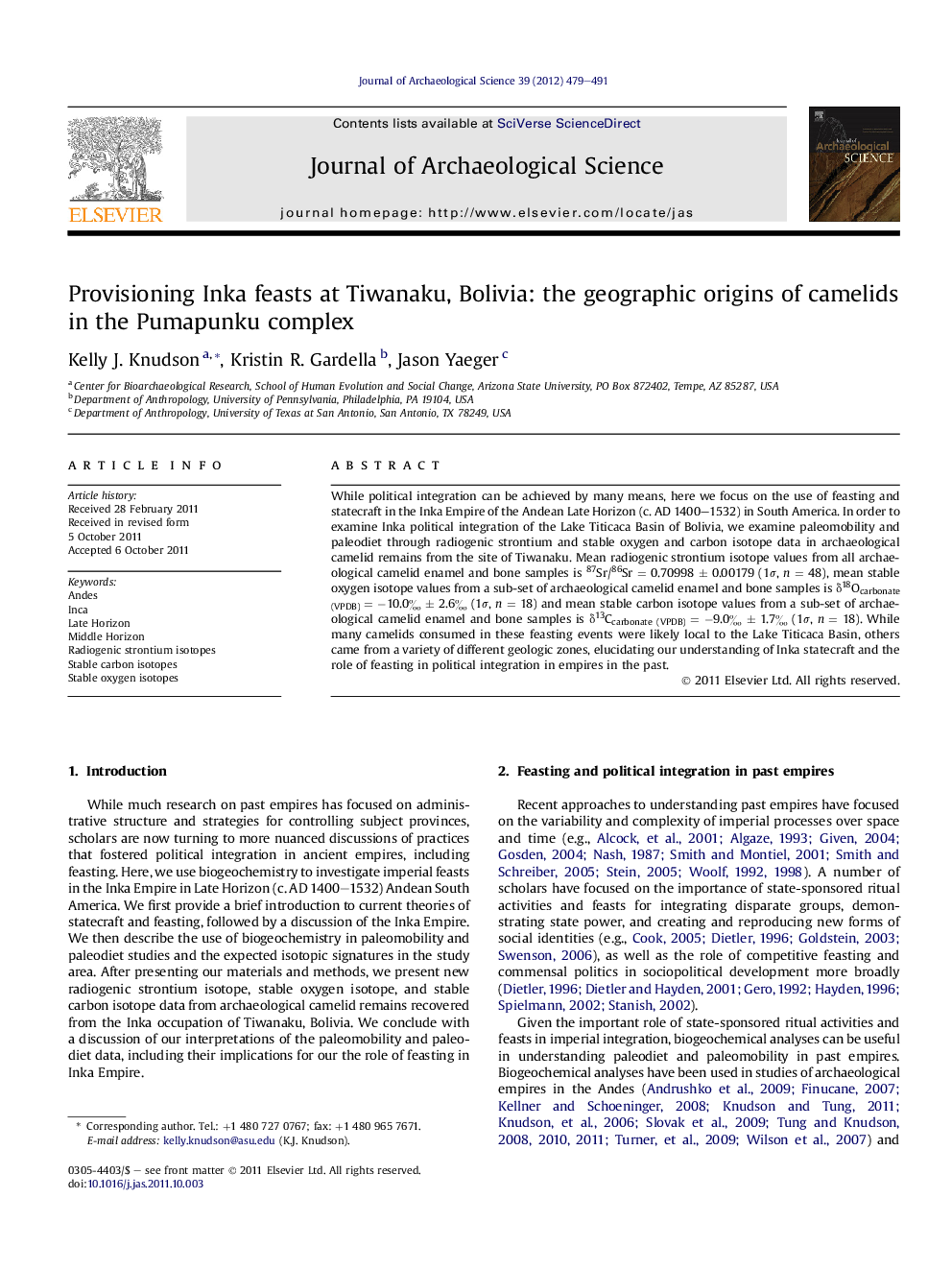| Article ID | Journal | Published Year | Pages | File Type |
|---|---|---|---|---|
| 1035900 | Journal of Archaeological Science | 2012 | 13 Pages |
While political integration can be achieved by many means, here we focus on the use of feasting and statecraft in the Inka Empire of the Andean Late Horizon (c. AD 1400–1532) in South America. In order to examine Inka political integration of the Lake Titicaca Basin of Bolivia, we examine paleomobility and paleodiet through radiogenic strontium and stable oxygen and carbon isotope data in archaeological camelid remains from the site of Tiwanaku. Mean radiogenic strontium isotope values from all archaeological camelid enamel and bone samples is 87Sr/86Sr = 0.70998 ± 0.00179 (1σ, n = 48), mean stable oxygen isotope values from a sub-set of archaeological camelid enamel and bone samples is δ18Ocarbonate (VPDB) = −10.0‰ ± 2.6‰ (1σ, n = 18) and mean stable carbon isotope values from a sub-set of archaeological camelid enamel and bone samples is δ13Ccarbonate (VPDB) = −9.0‰ ± 1.7‰ (1σ, n = 18). While many camelids consumed in these feasting events were likely local to the Lake Titicaca Basin, others came from a variety of different geologic zones, elucidating our understanding of Inka statecraft and the role of feasting in political integration in empires in the past.
► We use biogeochemistry to investigate paleomobility and paleodiet in archeological camelid remains. ► In Inka contexts at Tiwanaku, Bolivia, many camelids were “local” to the Lake Titicaca Basin. ► However, other camelids came from a variety of different zones.
